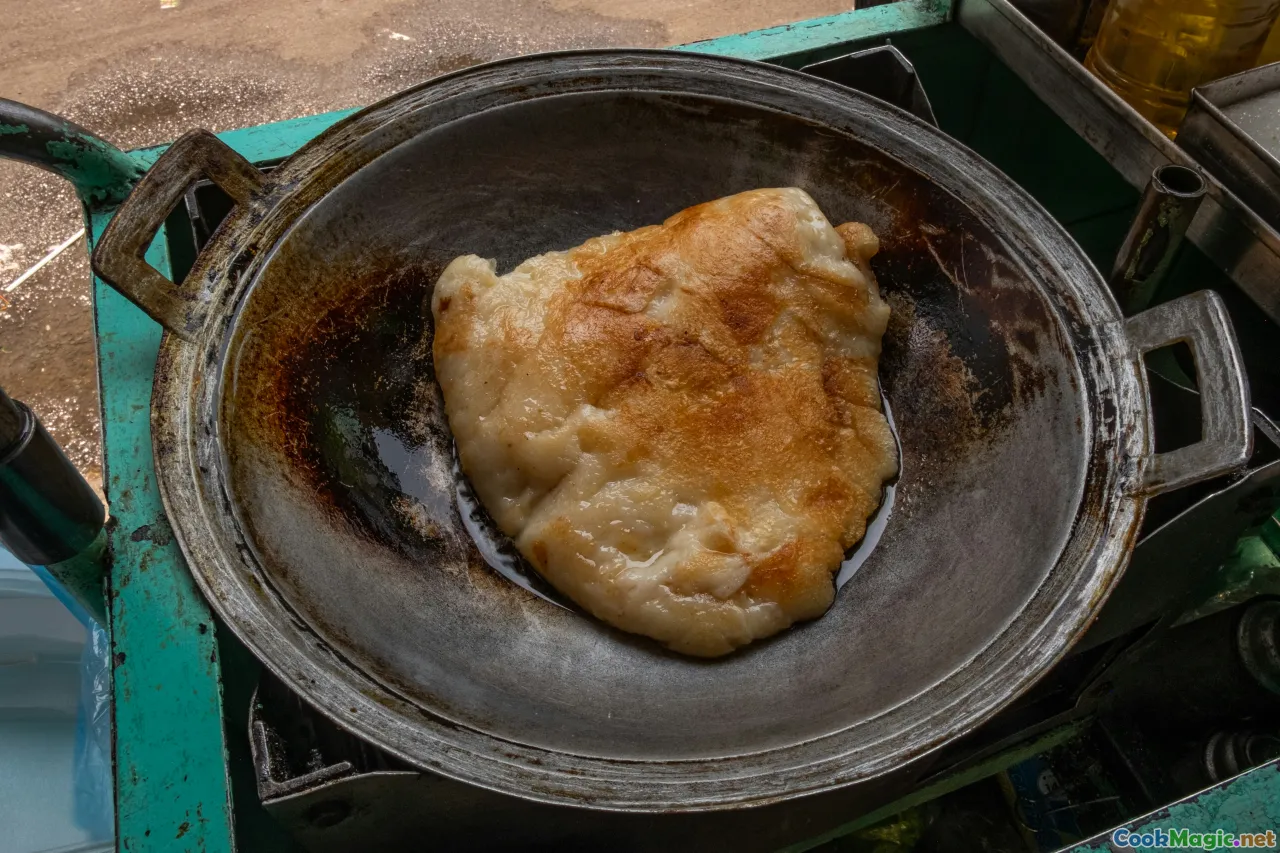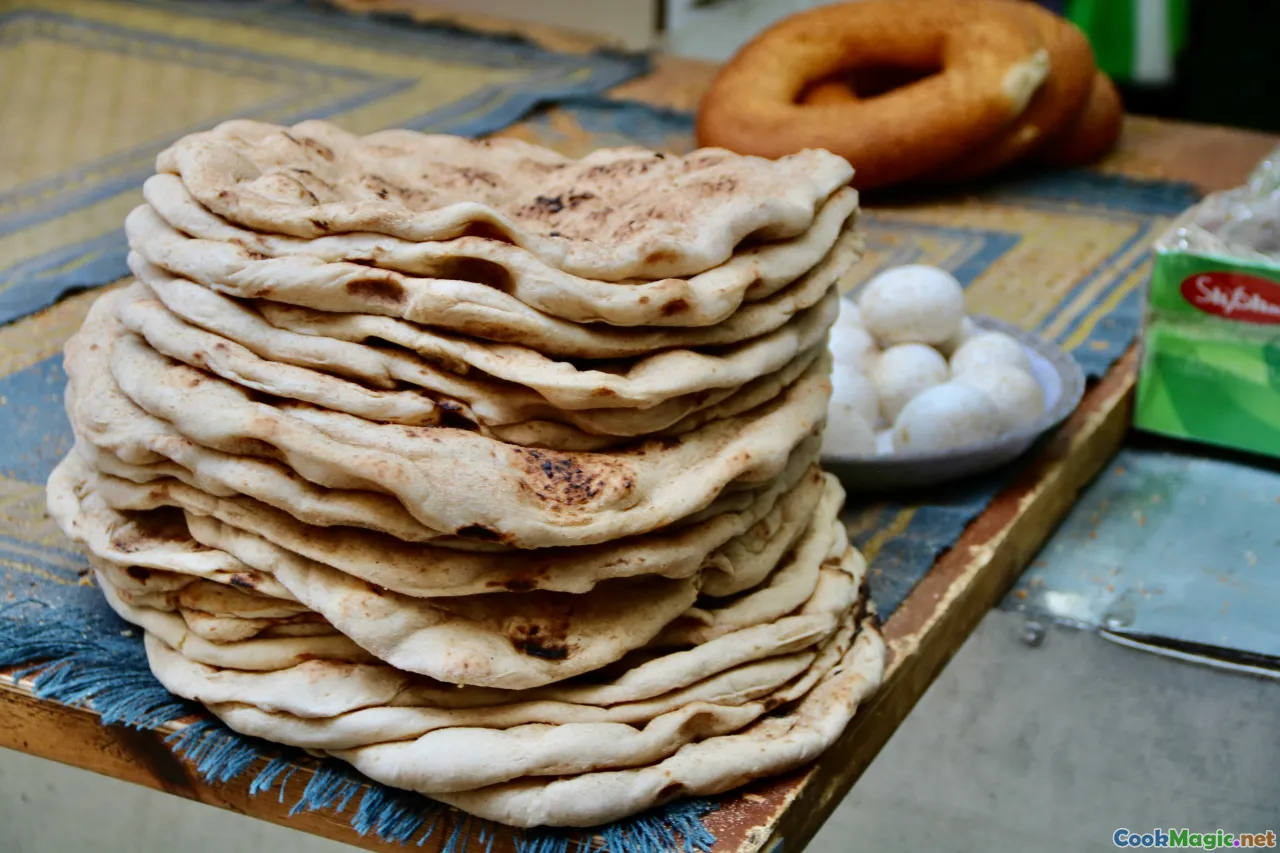A Guide to Boorsoq Kyrgyz Fried Dough Delights
11 min read Explore the origins, preparation, and cultural significance of Boorsoq, a beloved Kyrgyz fried dough treat enjoyed across Central Asia. July 11, 2025 09:05
Awakening the Senses with Boorsoq: Kyrgyz Fried Dough Delights
Nestled amid the majestic peaks of the Tien Shan and the expansive plains of the Eurasian steppe, Kyrgyzstan offers a culinary tapestry woven from centuries of nomadic traditions. Among its most beloved and evocative dishes lies Boorsoq — a humble yet profoundly soulful fried dough that has been satisfying mouths and warming hearts for generations. The crackling sound as the dough hits hot oil, the enticing aroma wafting through village streets, the crispy exterior giving way to a tender, airy inside — all converge to make Boorsoq not just a snack, but a cultural experience. Today, we delve into the rich history, preparation, and cultural significance of this Kyrgyz fried dough delight, celebrating its rightful place on the global culinary stage.

The Heartbeat of Kyrgyz Morning Tables: What Is Boorsoq?
Boorsoq, sometimes known as "fried dough balls," is a staple in Kyrgyz households. Its origins are deeply rooted in nomadic life, where ingredients had to be versatile, easy to prepare, and nourishing to sustain long journeys across rugged terrains and weathered steppes. The name "Boorsoq" itself echoes in local dialects, describing the rounded, somewhat irregular shapes of the dough pieces.
Visually, Boorsoq bears a golden-brown hue, tinged by the unrelenting heat of traditional frying pans (called "khan" or "kazan"), and possesses a tempting, slightly puffy appearance. When freshly made, the surface crackles gently as you bite into it, revealing a soft, mildly chewy crumb that soaks up a drizzle of honey, sour cream, or serving of jam. Its scent dances through the air—rich, a little salty, with a whisper of yeasty warmth—evoking images of bustling bazaars, family gatherings, and festive celebrations.

How to Make Boorsoq: A Step-by-Step Guide
Making Boorsoq is an art that combines simple ingredients with heartfelt patience. The process is usually a communal affair—families gather around the table, sharing stories as they roll, cut, and fry.
Ingredients:
- 3 cups of all-purpose flour
- 1 teaspoon salt
- 1 teaspoon sugar
- 1 teaspoon dry yeast
- 1 cup warm water
- Vegetable oil for frying
**Instructions:**1.Activate the Yeast: In a small bowl, dissolve the yeast and a pinch of sugar in warm water. Let it sit for about 10 minutes until frothy. 2. Prepare the Dough: In a large mixing bowl, combine the flour, salt, and remaining sugar. Pour in the activated yeast mixture. 3. Knead: Mix until a soft dough forms. Knead thoroughly for about 10 minutes until smooth and elastic. 4. Rest: Cover with a damp cloth and let it rise in a warm place for approximately an hour — the dough should double in size. 5. Shape: Punch down the dough, then pinch off small portions. Roll each into a ball, then flatten into disks approximately 10 cm in diameter. 6. Fry: Heat vegetable oil in a deep frying pan. Fry each piece on medium-high heat, turning occasionally until deep golden and puffed—about 2–3 minutes per side. 7. **Drain and Serve:**Remove from oil, drain on paper towels, and serve hot.Pro tip: For added flavor, some Kyrgyz families incorporate pieces of onion or diced potatoes into the dough before frying, creating variations that carry regional or personal twists.

Cultural Significance and Traditions Surrounding Boorsoq
In Kyrgyzstan, Boorsoq is more than just a breakfast option; it’s woven into the fabric of community and celebration. At weddings, Boorsoq is often prepared in large quantities as an offering of hospitality, symbolizing prosperity and unity. During Naryn, Kyrgyzstan's richest spring festival, families gather to make and share Boorsoq, often accompanying it with freshly churned kumis (fermented mare's milk) or hot black tea.
In rural villages, a freshly fried batch of Boorsoq may be a sign of welcome, a gesture of goodwill extended to friends and neighbors. Children chase each other barefoot across the courtyards, clutching warm pieces in their tiny hands, while elders reminisce about the dishes their grandparents prepared—linking past and present in a shared culinary ritual.
Many Kyrgyz families believe that the aroma of Boorsoq carried by the wind can signal the importance of gatherings, weddings, or seasonal fairs—an olfactory herald of joy and togetherness.

Exploring Variations and Modern Twists
While the classic Boorsoq remains a beloved staple, contemporary cooks and bakers have experimented with variations to suit modern palates and dietary preferences.
- Sweet Variations: Dipping Boorsoq in honey or sprinkling powdered sugar atop freshly fried pieces transforms it into a sweet treat, perfect for dessert or tea accompaniments.
- Savory Twists: Incorporating herbs like dill or cilantro into the dough, or stuffing Boorsoq with mashed potatoes or cheese, creates savory versions perfect for snack time.
- Fusion and Global Influence: Some chefs in Bishkek and Osh have taken a page from global fried dough traditions—adding cinnamon and sugar for a "Cinnamon Boorsoq" or serving it with yogurt and a dash of chili oil for a spicy-tangy flair.
As Kyrgyz cuisine integrates with a broader culinary world, Boorsoq remains a versatile canvas for innovation while respecting its deep cultural roots.

Tips from the Trenches: Mastering Perfectly Crispy Boorsoq
Achieving the ideal crispy yet tender Boorsoq can be a delightful challenge. Here are some experts' tips for success:
- Use fresh oil: Old, stale oil will impart a rancid flavor and hinder crispiness.
- Maintain proper temperature: Keep the oil around 180°C (350°F). If too hot, the exterior burns before the interior cooks; too cool, and the dough becomes greasy.
- Do not overcrowd: Fry in small batches to ensure even cooking and temperature stability.
- Test-fry the first piece: Adjust heat as needed based on initial results.
- Drain thoroughly: Hanging the fried pieces on a wire rack allows excess oil to drip away, maintaining crunch.
Perfecting Boorsoq transforms simple ingredients into a culinary masterpiece that heals, delights, and connects.

Celebrating Boorsoq: From Kyrgyz Homes to Global Tables
Today, Boorsoq's soulful aroma reaches beyond Kyrgyzstan’s borders—a testament to the universal language of good food. Rooted in nomadic history and familial tradition, it embodies warmth, resilience, and community.
Travelers and food enthusiasts who venture into Kyrgyzstan often find themselves captivated by the simple yet profound pleasure of biting into a freshly fried Boorsoq. Whether enjoyed plain, topped with honey, or accompanied by fermented kumis, this dish beckons with the promise of tradition and the comfort of home.
In culinary circles worldwide, there is growing appreciation for dishes that reflect cultural identity and history. Boorsoq stands proudly among such offerings, reminding us that sometimes the simplest ingredients—flour, water, salt, and oil—carry the weight of history, emotion, and love.
So next time you seek a taste of Kyrgyz hospitality, roll up your sleeves, heat your oil, and make your own batch of Boorsoq—a delicious, crispy portal into the heart of Kyrgyz nomadic spirit.

From the rugged steppes to your kitchen, may every bite of Boorsoq bring you closer to Kyrgyzstan’s enduring soul—a land where tradition is deep-fried and shared with pride.









